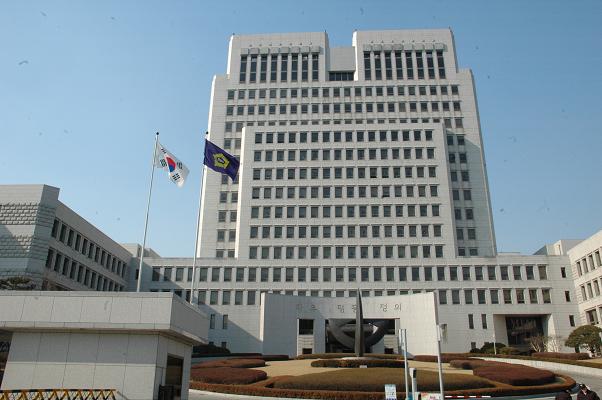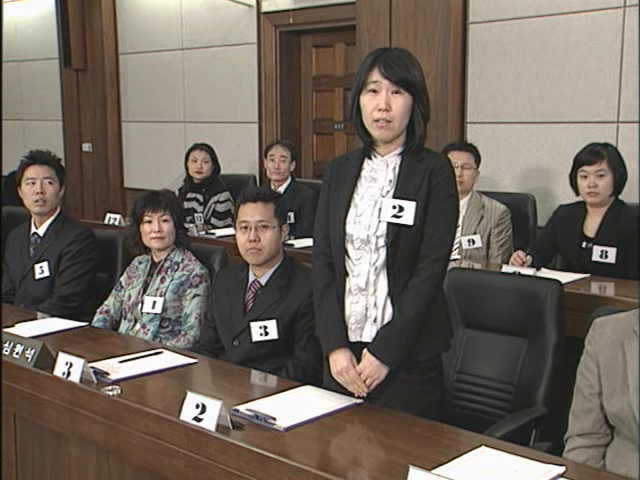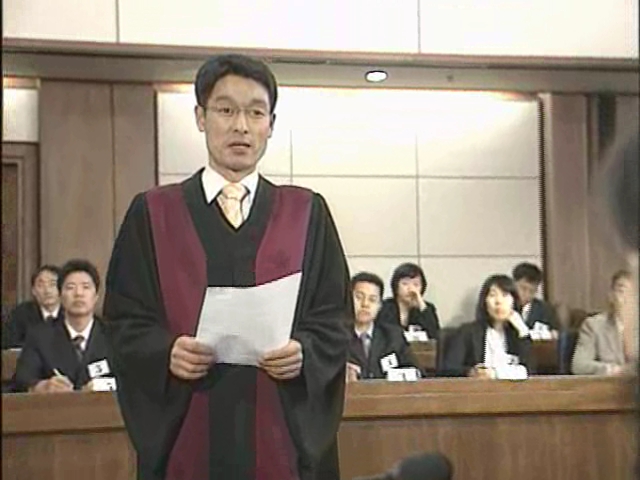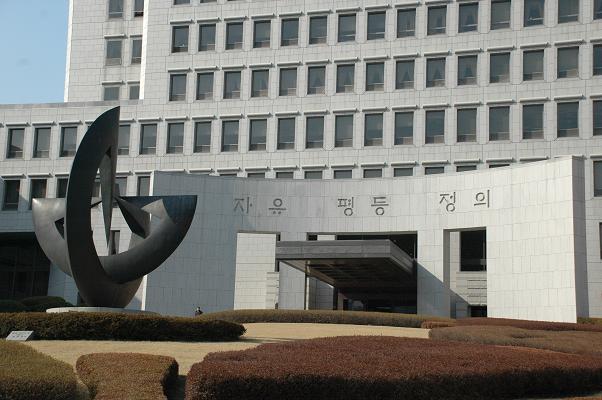A major judicial reform allowing public participation in court

JURORS WHO used to appear only in foreign movies, became a reality in Korea. On Feb. 12, 2008, a trial by jury made its first debut in Daegu district court, as the “Civil Participation System," or “Lay Participation in Criminal Trials,” took effect on Jan. 1, 2008, as part of the judiciary reform. This system is still in its first stage. After analyzing the result of the first civil participation system, the government is hoping to perfect the complete system by 2012. It marks a significant change, as it enables public participation in criminal court, which was impossible in the previous system.
Civil participation system
A civil participation system allows a criminal trial where a jury participates in proceedings of a trial and gives advisory comments to judges. It can be distinguished from a bench trial where verdicts depend solely on the judge and his/her interpretation of the law. Under the former judicial system only bench trials were held, so the general public never had the opportunity to participate in the due process of law.
Civic groups and academic authorities have constantly maintained that a new system to guarantee public participation in court should be introduced. Finally, along with other judicial reform measures, the civil participation system was adopted to promote the general public’s participation in legal affairs in accordance with the sprit of democracy and human rights.
Mixture of German and American system
The civil participation system in Korea is particular and different from other nations’ judicial systems. This system integrated the American jury system and the German lay judge syste, reflecting the situation.
Under the German lay judge system, Schoffe(laymen), who are jurors in a jury system and civil participation system, are appointed for a 4-year term. Usually two schoffe and one to three judges take part in a trial, and they decide whether the accused is guilty or not together by a majority vote. So in this case, schoffe’s opinions are binding in law equally to those of judges. Also, for sentencing those found guilty, they decide together through debates and negotiations.
In the United States, under the jury system, a judge and 12 jurors take part in trials. Jurors give verdicts of guilty or innocent unanimously, and their verdicts become final judgment. However, if even a single juror gives a different verdict to that of other jurors, the trial becomes invalid, and the court must hold a new trial. The jurors do not participate in the sentencing of the accused..
The new Korean system mixed parts of both systems, with some modifications. In terms of the jurors’ verdicts, the Korean system revised the American jury system. Jurors give verdicts, but their findings are not binding. Regarding sentencing, it adopted part of the German lay judge system. Jurors discuss the sentencing of the accused with judges, but their opinions serve only as recommendations.
Selection of Jurors

A competent court taking charge of a trial by jury, selects candidates randomly among citizens over 20 and under its jurisdiction. Yet, there are some disqualification factors. Ex-convicts, soldiers, people who work in the field of law, and various others proscribed by law, cannot participate as jurors, or alternate jurors even if they were chosen as candidates. From among qualified candidates, the court makes a final selection of jurors and alternate jurors depending on age, gender, occupation and etc. Usually seven to nine jurors and three alternate jurors take part in criminal trials.
If a selected juror does not have any reason for disqualification or exemption such as a serious illness or other unavoidable reason, he/she must attend the trial on a specified date. Otherwise, the court imposes a fine up to ₩2,000,000. On the other hand, if a juror or an alternate juror performes his/her duty completely at trial, the court allows expenses for food, transportation and lodging which, according to the regulations, are about ₩100,000 for a juror and ₩50,000 for an alternate juror.
Trial by jury

Under the civil participation system, criminal trial by jury is held only when it satisfies several conditions. The type of cases must be identified as felony cases allowing jury trials by law such as rape, burglary, and murder. Second, the accused has to request a jury’s participation. Finally, the court decides whether the jury system is necessary for the case.
Jurors take part in trials by giving advisory comments to judges. They give a verdict regarding whether a defendant is guilty or not by a majority vote. If the accused is found guilty by the judge, they debate on sentencing. Referring to jurors’ opinions, the judiciary finally makes decisions on judgment and sentence.
Expectations and concerns
Since this system enables public participation, it will contribute to establish democracy in legal areas that have been limited thus far. Also, the public will put more trust in the proceedings of a trial that they take part in directly. Han Sang-hoon (Prof., Dept. of Law.), the former expert adviser of the judiciary reform committee, says, “The civil participation system will contribute to boosting public confidence in court decisions by making proceedings of judgment more transparent.”
However, despite of its intention as an effort for participatory democracy, there are some concerns over its effectiveness. Since paternalism and compassion are widespread in Korea, verdicts of jurors can depend on sympathy or pity for the accused rather than a reasonable judgment. In two civil participation trials, held on Feb. 12 in Daegu and Feb. 18 in Chungju, the prosecutions appealed both decisions. The accused was sentenced to probation in Daegu, and was found innocent by jurors and judges in Chungju.
* * *

The civil participation system is now just beginning, but many changes in courts and cases are already unfolding. As such, it is a large reform in the legal area that will bring another considerable changes ahead. Thus, the public needs to monitor and maintain interest in order for this system work successfully. With consistent monitoring and active public participation, this civil participation system will become established in Korea in the positive way as it was first intended.
Box - Other nations’ systems
The jury system, lay judge system, or other systems allowing public participation in court are in effect in over 70 nations, including the United Kingdom, the United States, Canada, Australia, Russia, Spain, and Hong Kong.
 |
Japan: In 1928, a jury system in which jurors’ opinions were not legally binding was introduced in Japan, but it was abolished in 1943. However, the lay participation system will be introduced in 2009.
 |
Russia: Trial by jury was introduced as a result of the judicial reforms of Alexander II in 1864. After the October Revolution, it was abolished but introduced again in 1993.
 |
The United Kingdom: The United Kingdom introduced the jury system in the 11th century. The system is a little different in each legal jurisdiction; England and Wales, Scotland and Northern Ireland. In Scotland, trials by jury are held for civil and criminal trials.
 |
Australia: The first trial by jury was held in 1841. For criminal trials, majority verdicts or unanimous verdicts are allowed, depending on the region.

